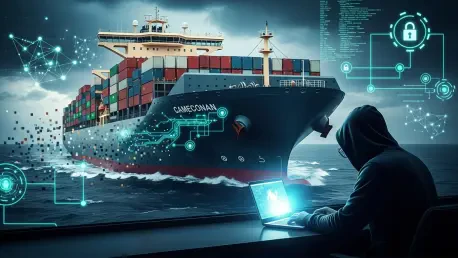Overview of the Maritime Industry in the Digital Age
The maritime industry, a cornerstone of global trade, facilitates over 80 percent of international commerce through vast networks of shipping routes and bustling ports, underpinning economies worldwide by connecting supply chains across continents. Valued at trillions of dollars annually, its significance extends beyond physical transport to encompass a digital transformation that is reshaping operations at every level, from cargo tracking to vessel navigation.
Central to this shift is the adoption of cutting-edge technologies such as artificial intelligence and IoT-enabled systems, which optimize routes, predict maintenance needs, and enhance port efficiency. Digital infrastructure now permeates key segments like shipping, logistics, and port management, enabling stakeholders—shipowners, terminal operators, and regulatory bodies—to streamline processes. Industry associations also play a vital role in coordinating standards and fostering innovation across these interconnected domains.
Reliance on systems like Automatic Identification Systems (AIS) and Global Positioning Systems (GPS) has become indispensable for real-time tracking and operational safety. These tools ensure vessels avoid collisions and adhere to schedules, directly impacting cost efficiency and reliability. However, as digital dependency grows, so does exposure to risks that threaten to disrupt this finely tuned ecosystem, setting the stage for a critical challenge facing the industry.
Escalating Cyber Risks in Maritime Operations
Emerging Threats and Vulnerabilities
Cyber threats in the maritime sector have evolved into a formidable adversary, with ransomware attacks targeting operational systems and supply chain vulnerabilities exposing critical weaknesses. Disruptions to AIS and GPS can mislead vessels or halt port activities, causing cascading delays across global trade networks. Such incidents are no longer theoretical; recent cases have seen hackers manipulate navigation data, leading to significant financial losses and safety hazards.
The rapid pace of technological advancement, while beneficial, introduces new vulnerabilities as systems become more interconnected. User behaviors, such as inadequate password practices or failure to update software on vessels, further compound these risks. As attackers exploit these gaps with increasingly sophisticated methods, the industry faces a pressing need to adapt to a threat landscape that shifts almost daily.
High-profile cyber incidents have underscored the tangible impact on maritime operations, from delayed shipments to compromised cargo security. These events serve as stark reminders that digital tools, while enhancing efficiency, can become liabilities if not adequately protected. The stakes are high, as even a single breach can ripple through the interconnected web of global shipping, affecting multiple stakeholders simultaneously.
Industry Risk Perception and Data Insights
Cyberattacks rank among the top concerns for maritime stakeholders, as highlighted by the International Chamber of Shipping (ICS) Maritime Risk Barometer Report for the current year. This assessment positions cyber threats alongside other critical risks like geopolitical instability, reflecting a heightened awareness of their potential to derail operations. The consensus is clear: ignoring these dangers is no longer an option for an industry so integral to global commerce.
Broader corporate risk evaluations, such as the Allianz Risk Barometer for this year, reinforce this view by identifying cyber risk as the foremost concern across various sectors, including transportation. This alignment suggests that maritime challenges are part of a larger trend affecting digitally reliant industries. Data from these reports indicate that the frequency and severity of attacks are on an upward trajectory, demanding urgent attention.
Looking ahead, projections for the period from 2025 to 2027 anticipate a continued rise in cyber threats, driven by the proliferation of connected devices on ships and in ports. Analysts predict that without robust countermeasures, the cost of breaches—both in financial terms and reputational damage—will escalate. This forward-looking perspective emphasizes the need for proactive strategies to stay ahead of malicious actors who are constantly refining their tactics.
Challenges in Securing the Maritime Cyber Environment
Securing a digitally integrated maritime industry presents a complex puzzle, with technological limitations often hindering the deployment of advanced defenses. Many vessels operate with legacy systems that are difficult to patch or upgrade without significant downtime, leaving them exposed to modern threats. Resource constraints, particularly for smaller operators, further exacerbate the struggle to implement comprehensive cybersecurity measures.
Operational hurdles add another layer of difficulty, as updating security controls on active ships poses logistical challenges. Crews, often focused on navigation and cargo handling, may lack the training to recognize phishing attempts or other cyber risks, creating human vulnerabilities. Bridging this gap requires tailored education programs that balance maritime duties with digital awareness, a task easier said than done in a high-pressure environment.
Compliance with evolving regulations, such as the EU’s Network and Information Systems Directive 2 (NIS2), remains inconsistent across regions, with some areas lagging in adoption. These delays hinder the industry’s ability to standardize protections and leave gaps that attackers can exploit. Overcoming these obstacles calls for scalable security solutions, increased investment in technology, and collaborative efforts to share best practices among stakeholders, ensuring that even the smallest players are not left behind.
Regulatory Frameworks and Industry Guidelines Shaping Cybersecurity
The regulatory landscape for maritime cybersecurity is evolving rapidly to address the mounting risks, with the International Maritime Organization (IMO) updating its Guidelines on Maritime Cyber Risk Management earlier this year. These guidelines offer high-level recommendations for integrating cyber risk into safety protocols, urging companies to assess vulnerabilities systematically. Their influence shapes how shipowners and operators prioritize digital defenses on a global scale.
Regionally, frameworks like the UK Department of Transport’s Cyber Security Code of Practice for Ships, revised in recent years, provide detailed, actionable steps for enhancing vessel security. Meanwhile, the EU’s NIS2 Directive, now in effect, mandates stricter cybersecurity measures across critical sectors, including transportation, pushing member states to align national laws. These regulations collectively aim to create a unified front against digital threats, though enforcement varies.
Industry-driven standards also play a pivotal role, with associations like ICS, BIMCO, and the International Association of Classification Societies (IACS) developing tools such as UR E26 and UR E27 to standardize cyber resilience. Integrating these measures into frameworks like the International Ship and Port Facility Security (ISPS) Code ensures that cyber considerations are not an afterthought but a core component of operational safety. This synergy between regulation and industry guidance fosters a culture of preparedness that is essential for long-term stability.
Future Directions in Maritime Cybersecurity
Emerging technologies are poised to redefine how the maritime sector combats cyber threats, with advanced threat detection systems and AI-driven security solutions leading the charge. These innovations can predict and neutralize attacks before they cause harm, offering a proactive rather than reactive approach. Their adoption, though still in early stages for many operators, signals a shift toward smarter, more resilient defenses.
Market disruptors, such as the rise of autonomous vessels, introduce unique cybersecurity challenges that demand specialized protections. These ships, reliant on remote systems and minimal human oversight, could become prime targets if not secured adequately. Addressing their needs will require tailored standards and significant investment, testing the industry’s ability to innovate under pressure.
Global economic conditions and geopolitical tensions further complicate the cyber landscape, influencing both threat patterns and regulatory responses. Instabilities in key regions can amplify risks like state-sponsored attacks, while economic downturns may limit funding for security upgrades. Navigating these external forces will be crucial, alongside practical tools like the Cyber Security Workbook for Onboard Ship Use, updated recently, which provides actionable checklists to bridge current gaps and prepare for tomorrow’s challenges.
Conclusion and Strategic Outlook
Reflecting on the comprehensive analysis, it has become evident that cybersecurity has emerged as a defining issue for the maritime industry in 2025, intertwining with every facet of operational success. The persistent threats, from ransomware to navigation system disruptions, have underscored a reality where digital progress comes with substantial risks. Yet, the concerted efforts through updated regulations and industry collaboration have laid a foundation for resilience that many stakeholders are beginning to build upon.
Looking ahead, actionable steps have emerged as the next priority for all involved parties. Investing in continuous crew training to recognize and respond to cyber incidents stands out as a critical measure to reduce human error. Additionally, stakeholders are encouraged to rigorously monitor compliance with frameworks like NIS2 and IMO guidelines, ensuring that gaps in implementation do not undermine collective efforts.
A further consideration that has gained traction is the strategic benchmarking of cyber-secure vessels against those less prepared over the coming years. This comparison promises to yield valuable insights into the tangible benefits of robust defenses, guiding future investments. Through sustained innovation and global cooperation, the industry positions itself to not only mitigate risks but also transform challenges into opportunities for a more secure maritime future.









